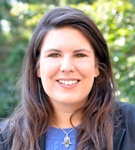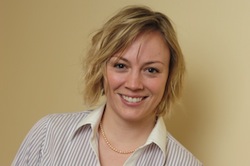Word is Bond: At Duke’s Sustainable Business Summit, Excitement Around Social Bonds and Online Impact Investing Platforms
The theme of the 2012 Sustainable Business and Social Innovation (SBSI) summit at Duke’s Fuqua School of Business was Disrupting the Status Quo. Indeed, there was much discussion about new models to change business as usual in education, health and other sectors.
Innovative Products and Platforms
At the global health partnerships panel, many people discussed the importance of scaling promising health enterprises. Richard Bartlett from the International Partnership for Innovative Healthcare Delivery discussed how this network helps health businesses expand through networking, consulting and accessing information about best practices (the application is now open for new members!).
Scale is typically achieved after a good pilot. One highly promising startup being presented was the Maternal Health Platform being piloted by the nonprofit organization Global Health Bridge at the Comprehensive Rural Health Project (CRHP), Jamkhed, in eastern Maharashtra. Founder Smisha Agarwal explained that their mobile-based data collection system allows community health workers—some 100 are piloting the system—to enter 22 data points during a home visit.
 According to Agarwal (pictured left), the team consulted with village health workers to learn what type of system would work best. The workers advised them not to use an SMS-based system (many can’t read). Rather, the interactive system is voice-based, and translated in the women’s native Marathi. “Digital inputs are in 1s or 2s, instead of SMS, and our protocol is simple,” said Agarwal, who founded the organization after graduating with an MPH/MBA from Johns Hopkins. They are now looking for another community-based organization to expand their pilot. The organization should have at least 100 community health workers as part of their core operations.
According to Agarwal (pictured left), the team consulted with village health workers to learn what type of system would work best. The workers advised them not to use an SMS-based system (many can’t read). Rather, the interactive system is voice-based, and translated in the women’s native Marathi. “Digital inputs are in 1s or 2s, instead of SMS, and our protocol is simple,” said Agarwal, who founded the organization after graduating with an MPH/MBA from Johns Hopkins. They are now looking for another community-based organization to expand their pilot. The organization should have at least 100 community health workers as part of their core operations.
Another innovation presented was in water testing. KM Water Solutions enables water testing for microbials at remote sites without any equipment. The test, which looks like a plastic bag, is portable and easy to use. Cofounder Alice Wang, a student at University of North Carolina at Chapel Hill’s Gillings School of Global Public Health, estimates that the market for water testing is upward of $200 million. MEASURE Evaluation pilot-tested it in Peru, in conjunction with the country’s annual Demographic and Health Surveys (DHS.)
Innovative Financial Vehicles
“Innovative financial vehicles” may bring to mind nefarious 1990s invention such as credit default swaps. The Economist noted the “dreadful image” of financing innovation in a recent article, Playing with Fire.
Yet even skeptics note there is promise and potential in many new vehicles. Investors at another session at Duke’s conference discussed several financing innovations. Here, the word was bonds. Social bonds.
“Every nonprofit director has a ‘wish list’ in their drawer about what would make their program more effective, like more money for substance abuse treatment,” said Rebecca Leventhal (pictured lower right) of Social Finance US.
Leventhal’s organization aims to make nonprofit—and civic—dreams come true through social bonds, also referred to as a “pay for success” contract or “human capital performance bond.” The contract allows socially minded investors to support prevention programs that reduce the need for state-funded services such as imprisonment. Governments only repay investors if an evaluation determines that the objectives were achieved, such as reducing homelessness or recidivism.
Social Finance UK first tried the tool in 2010, when they devoted about $8 million from 17 investors to support a re-entry program for prisoners leaving prison over a six-year period. (Diana Hollmann described the program in a NB post last year). While the project won’t be evaluated for another few years, the prison director recently told the Financial Times that the team members were “seeing people staying out longer.”
Leventhal noted that the idea is catching on stateside. Massachusetts issued Requests for Response for performance-based financing to expand support for chronically homeless adults and youth exiting the juvenile justice system. Many other states, including Maryland, are now closely examining the promising while still-unproven approach.
Other innovative financing processes presented included the Village Capital model of “peer review,” in which social entrepreneurs recommend models for investment. Panelist John Hardman of First Light Ventures suggested that the typical due diligence process is not economically feasible with the small capital infusions ideally suited for many enterprises in the developing world. Hardman said, “The economics of investing doesn’t make sense [when an investment is for] $100,000 and you have to put in the same work as you would with a $3 million investment.” (See this earlier post on NB about Village Capital).
According to panelist Margot Kane of the Calvert Foundation, there is a large mismatch between the size of social enterprises and the vastness of investing funds.
“The world of investment capital is the ocean but the size of deals is an island,” said Kane, concluding, memorably, “We need infrastructure to build a bridge to the island.” She elaborated later, writing that:
Deals in the social enterprise sector are very, very tiny compared to the investment pool available, and the two often cannot meet in the middle (demand with supply) due to their vast differences in scale. So, you need infrastructure in the form of smaller intermediaries & funds – places that operate on smaller scales and can do smaller deals, provide technical assistance, pool funds and assets, etc. – [that] seek to bridge this gap between the various needs at the deal level and the vast channels through which investment capital can move. Additionally, ratings systems and third party analysis or certification – like B Lab – are integral parts of the infrastructure needed to grow and mature the social investment markets.
Creating a secondary market is also part of this infrastructure that ideally occurs once you have enough volume and deal flow to absorb the liquidity secondary markets can bring. That said, creating secondary markets will vastly increase the amount and types of capital flowing to social enterprise.
 Online markets are popping up in the field. According to a recent article on Promotora Social México, Mission Markets’s Access platform will support secondary market trading. According to this article, another online marketplace, GATE Impact, is a “step closer to a typical stock exchange,” since it will feature secondary trading as well as capital raising and investment listing.
Online markets are popping up in the field. According to a recent article on Promotora Social México, Mission Markets’s Access platform will support secondary market trading. According to this article, another online marketplace, GATE Impact, is a “step closer to a typical stock exchange,” since it will feature secondary trading as well as capital raising and investment listing.
Other platforms offer information to improve transparency. Since March 2011, Impact Partners has offered investors information about social enterprises in the Asia-Pacific region. While this service comes with an annual service fee, the Center for Health Market Innovations platform is a free, grant-funded resource focusing on health enterprises and nonprofit organizations (Full disclosure: I work on this project). After getting information on listed enterprises, investors can use the platform to initiate a conversation with entrepreneurs and NGO managers.
Ideally, the sessions could have been combined to discuss what innovative financial vehicles are ideally suited to help particularly models of startup enterprises and nonprofit programs go to scale. Yet at the end of the day, we felt energized, and empowered since the tools to disrupt the status quo are well within our grasp.
- Categories
- Health Care
